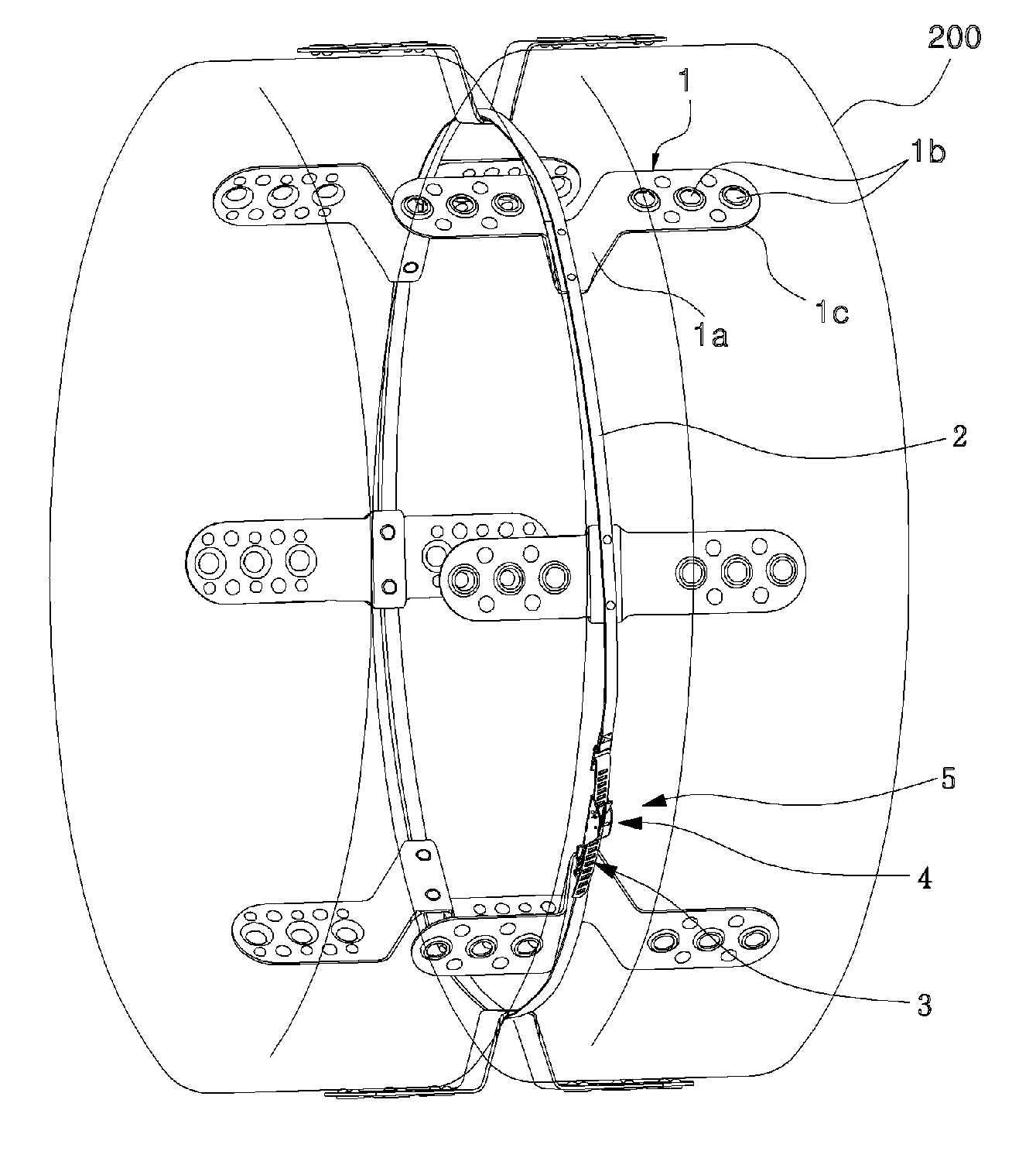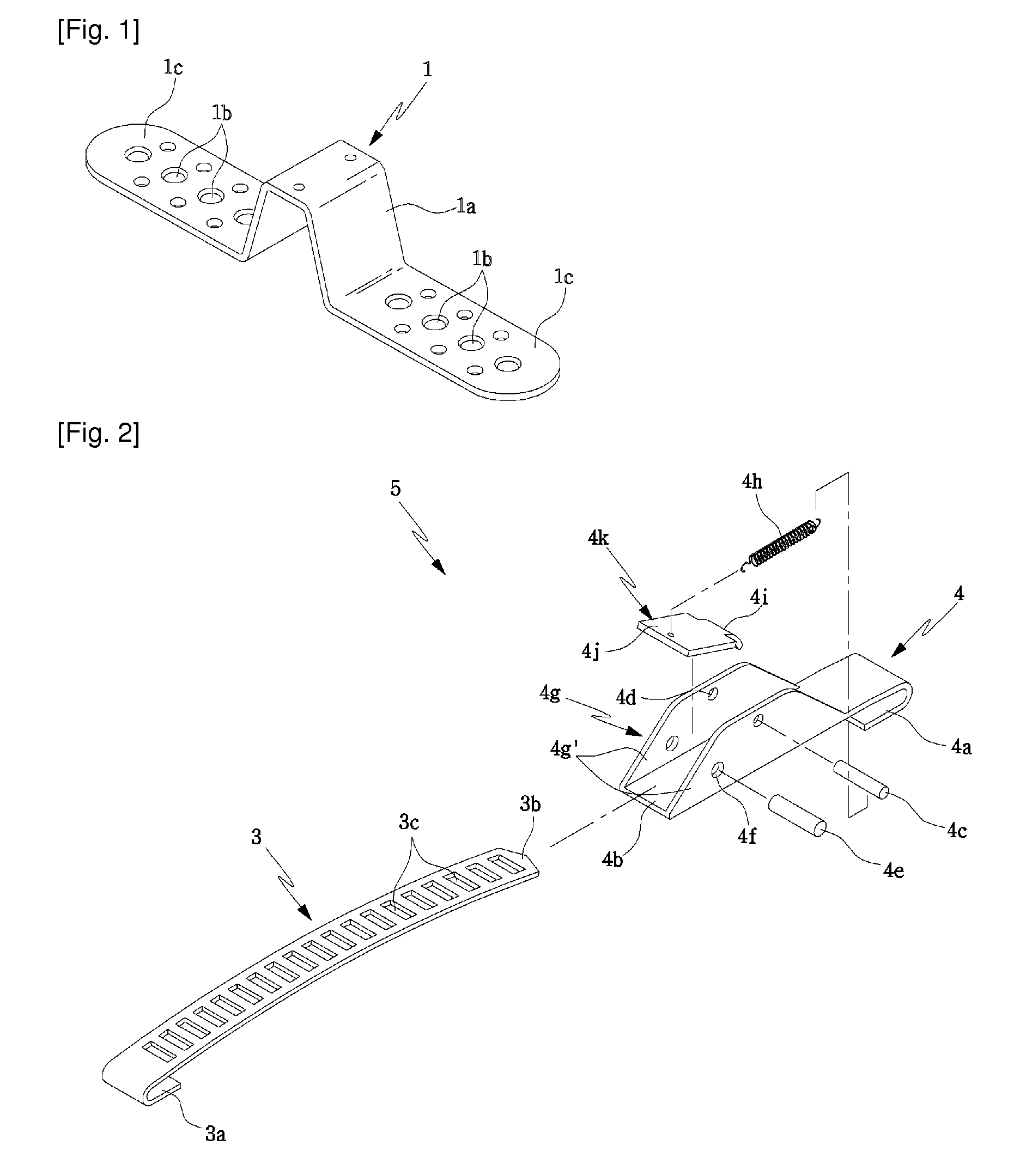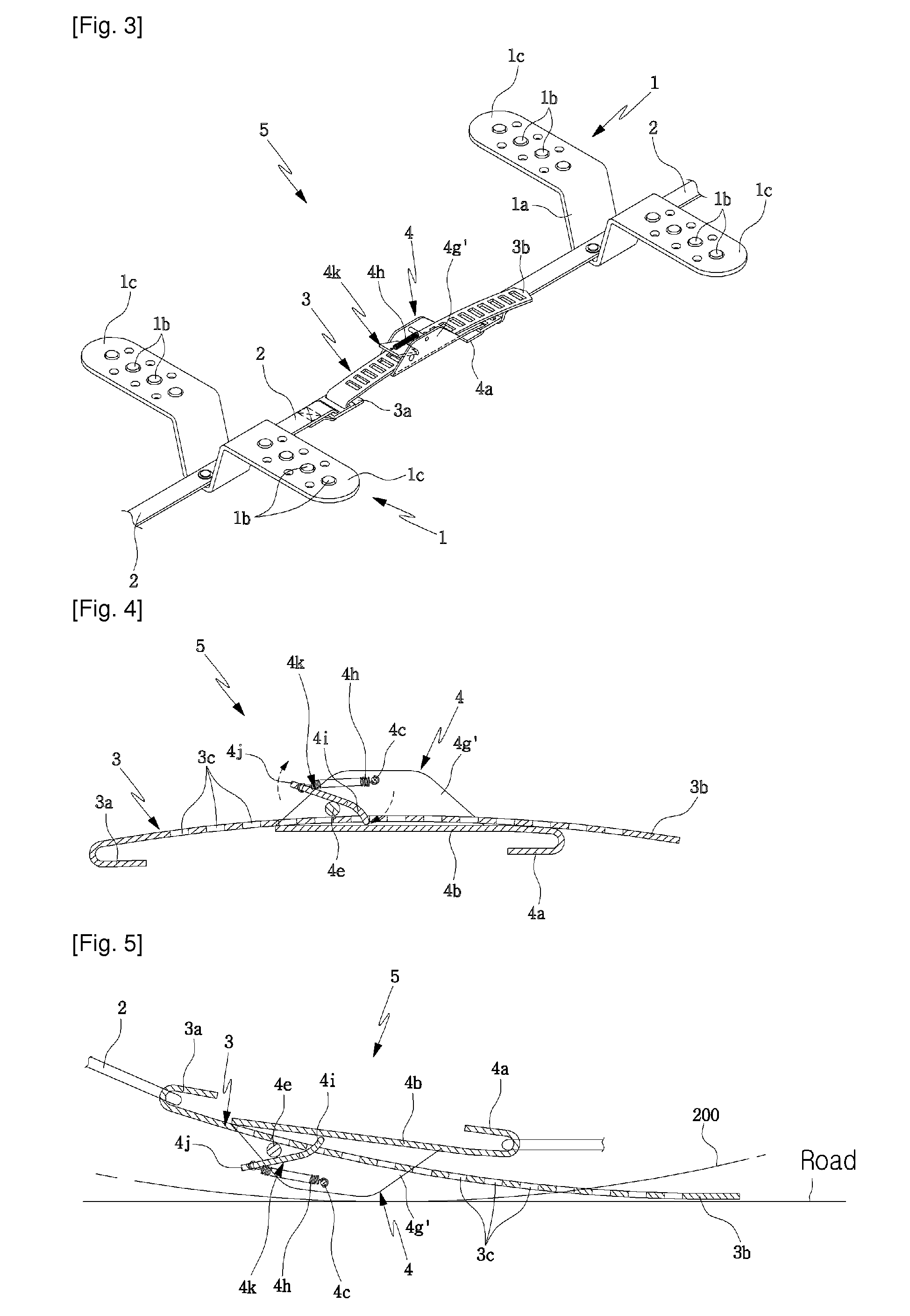On a road, such as a highway, snow chains cannot be used because they cause damage to the road and thus increase
accident risk.
Meanwhile, in the case of an integrated vehicle slipping prevention device, it is difficult for a woman, weak or handicapped user to attach or detach the device to a tire of a wheel.
In addition, when a user abruptly meets a snowy or icy road, it is not easy to rapidly attach the device to a tire.
Moreover, because forward or backward movement of the vehicle is required to attach or detach the device to or from the tire, work of attaching or detaching the device to or from the tire on a sloping road is very difficult.
Thus, it is difficult to apply the integrated vehicle slipping prevention device to a large vehicle which is typically provided with double wheels.
Furthermore, in the integrated vehicle slipping prevention device, it is very inconvenient to attach or detach the chain to or from the tire.
In consideration of a relatively narrow width and small
diameter of a double wheel tire used in a freight transportation vehicle, if the integrated vehicle slipping prevention device designed for passenger vehicles is attached to a tire of a
truck or
bus, force with which the device is attached to and is brought into contact with the tire may be unsatisfactory.
Thus, it may be impossible to effectively transmit driving force or to provide sufficient braking force.
However, this vehicle slipping prevention device has the following several problems.
Here, when braking force is continuously transmitted to the tires which rotate at a high speed, the snow chains may not be able to maintain intervals therebetween and may be focused in one direction.
Thus, braking force cannot be evenly transmitted to the entire area of the double wheel.
In addition, a load is focused on the snow chains, so that the chains are damaged or removed from the tires.
Furthermore, in the conventional vehicle slipping prevention device, when the vehicle travels, an excessive load may be focused on the device, so that
coupling portions of the snow chains may be undesirably loosened, with the result that the braking force is abruptly removed and the possibility of a large accident is increased.
In other words, the conventional vehicle slipping prevention device has a problem of low safety.
When the vehicle travels on an uneven
road surface, the snow chains may be undesirably gathered at one side and entangled so that the vehicle may not be steered in the direction in which the driver steers the vehicle, for example, the braking force may be applied in a direction in which the
centrifugal force is applied when the vehicle suddenly turns, thus causing an accident.
Thereby, fatigue fracture may be induced.
As such, in the case where a length to which the insert end 3b of the catch 3 is exposed from the clamp 4 is increased, the conventional vehicle slipping prevention device is problematic in that the catch may be brought into contact with the road surface by
centrifugal force generated when the vehicle travels, because the catch which passes through the clamp 4 is disposed outside the connection member 2.
Moreover, a broken piece of the catch 3 may be sprung out by
centrifugal force, with the result that it may damage the vehicle body or tear the tires of the double wheel 200.
As well, the broken piece may strike another vehicle which is traveling on an adjacent lane.
Furthermore, in the conventional vehicle slipping prevention device, if the portion at which the catch 3 is locked to the clamp 4 is damaged, the lock of the device may be loosened.
If the loosened device is undesirably wound around the shaft of the double wheel or another wheel, a large accident may be caused.
As well, the conventional vehicle slipping prevention device is problematic in that the catch 3 which has been locked to the clamp 4 may be undesirably unlocked and removed from the clamp 4 by vibration and centrifugal force.
 Login to View More
Login to View More  Login to View More
Login to View More 


